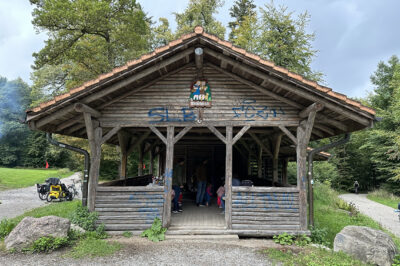
Re-Use in bridge construction – Reussbrücke Mühlau
“The project is based on an original approach and is the only team to show how the existing steel beams can be reused. The approach of building ahead and minimizing interventions, including in the natural space, are consistently followed. The proposal exemplifies engagement with the existing, even in a material sense.” We are pleased with the jury’s appreciative conclusion and it underlines – despite the missed success – that we are on the right track with our fundamental planning approach.
The study commission focused on the replacement of the Reuss bridge at Mühlau, which connects the community of the same name in the canton of Aargau with the community of Hünenberg in the canton of Zug. The existing bridge is in poor condition.
Our team, consisting of the engineering consortium Lüchinger+Meyer and CESMA Ingenieros as well as Waeber Dickenmann Steinegger Partner Architekten, was guided in the design work in particular by the objective of a “particularly environmentally friendly” bridge. The proposed solution for the new replacement structure is based on a re-use concept: the two solid steel girders of the existing superstructure are re-used to create a new, wider trough profile in composite steel and concrete. The sidewalk is guided outside the trough profile on a lightweight structure made of wood and steel.
The spatial separation thus achieved between road traffic and non-motorized traffic allows pedestrians to enjoy the magnificent natural landscape along the Reuss in peace. The wood of the walking surface of the footpath also physically signals and manifests the crossing of the Reuss nature reserve. The reuse of the existing steel beams not only significantly improves the ecological and energy balance, but also facilitates the construction of the new building and reduces costs considerably. Consequently, the submitted project achieved the lowest total cost projection of all designs. The existing steel beams have a particularly simple appearance, which is typical of the first welded steel structures. The preservation of this original design ensures a harmonious and calm integration of the bridge into the sensitive natural environment. But despite the integration of the existing girders, this is a new, modern structure. And this is not only due to the improvements in terms of road section and traffic routing. The structural system is also not comparable with the current one. On the one hand, the steel girders will be converted into composite girders and the deck will do without any cross girders at all, while on the other hand, the superstructure and substructure will be monolithically connected, making it an integral bridge. Such jointless systems, which also exhibit ductile load-bearing behavior, are not only reliable and robust, but also contribute to a reduction in the effort required for maintenance.
(Visualizations: Waeber Dickenmann Steinegger Partner)





